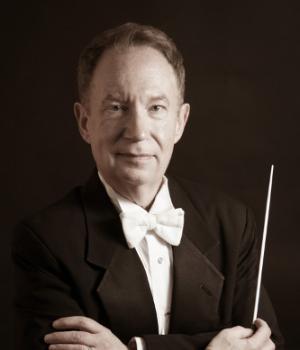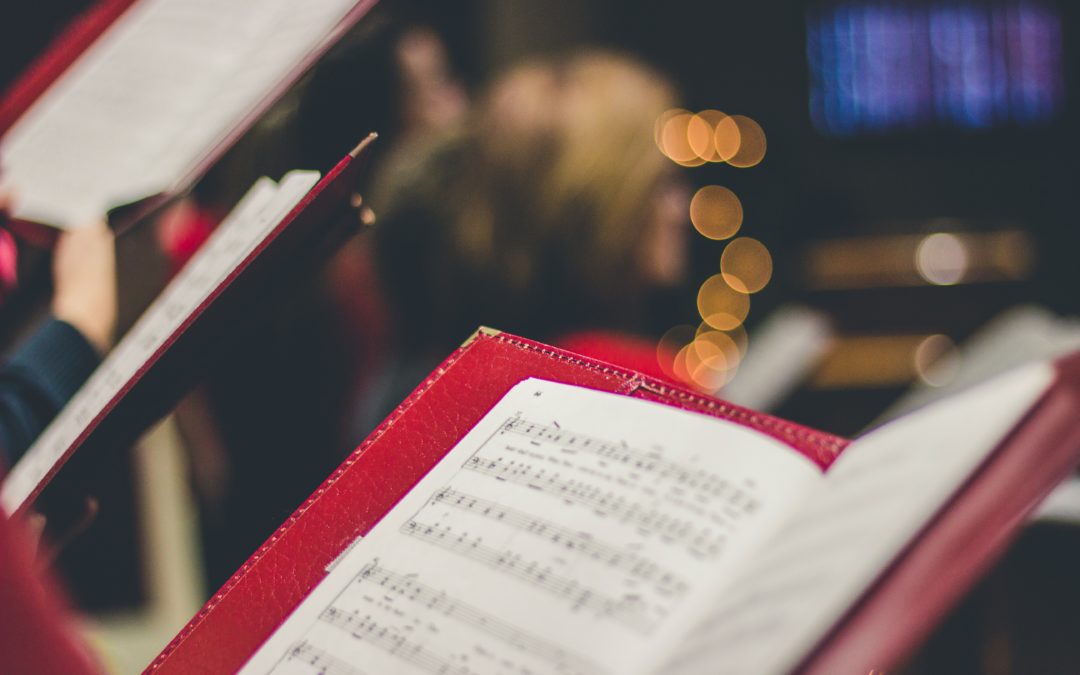This article first appeared in the Spring 2021 issue of GIA Quarterly magazine.
Author’s Note: Publication production schedules being what they are, I’m writing this article as we sail into the 12th week of state-imposed quarantine in response to the COVID-19 pandemic. Right now, it’s not at all clear when choirs will be allowed to resume singing or how we will pull this off while still observing the demands of social distancing and maximum group sizes.
In one sense, therefore, writing this column is an act of faith. At the same time, it’s a great opportunity to consider what to do in a situation probably familiar to many of us: a limited number of singers, anywhere from two to four, or an ensemble better suited to unison than singing in parts. What do we do then? Here are a few thoughts from my own experience. I hope you find them helpful.
“It’s not how many singers there are in the choir,” one of my mentors told me early in my church music career. “It’s how much choir there is in the singers you have.” I’ve thought about those words on more than one occasion and quote them frequently to my own ensembles, especially when we’re in the midst of a catch- as-catch-can, drop-in volunteer summer choir season, or when sickness unexpectedly shrinks our ranks to one or at most two well-intentioned singers on a part.
But even if size and experience may circumscribe what kind of repertoire we choose to sing with our choirs, there is no reason we can’t continue to make great music together. Limitations like the ones I’ve mentioned often hold hidden benefits and pose opportunities to develop skills that can increase individual musicianship among the singers we have, and at the same time plant foundational seeds to grow our ensembles larger in the weeks and months that follow.
What advantages are there to making music with limited forces?
To start, working this way allows us to focus and upgrade essential ensemble skills. It forces us to be intentional and attentive about nuances that can sometimes be allowed to slide in a larger group setting: unified vowels, crisp and clear diction, word shape, and larger expressive phrasing. More than this, working with a limited number of voices lets us pay greater attention to each singer—to basics like their alignment, their breathing, their phonation, and their intonation, but also their ability to anticipate the flow of the music and improve their audiation skills, the all-important ability to “listen louder than you sing.” Finally, working with limited forces, while not always easy, is an ideal way to foster independence in your singers and in your whole ensemble.
What are the biggest challenges of this kind of music making?
Hands down, it’s finding repertoire that fits the Sunday, the season, and the singers. But there are all sorts of possibilities, if you’re willing to look beyond what the composer initially intended (and that includes this composer, by the way). Want to sing the classics? Consider trying the soprano/alto duet “Den Tod” from Bach’s Cantata #4, with high voices on the top line and lower voices on the second part. A very singable English translation can be found at www.uvm.edu/~classics/ faculty/bach/BWV4.html.
Don’t have enough singers to do parts right now? No problem: alternate your singers by wherever their ranges are most comfortable to sing the unison chorus from Cantata #80, “And Though This World with Devils Filled.” Or do the same on the unison chorus from Cantata #140, “Zion Hears the Watchman’s Voices.” Both of these pieces feature familiar hymn melodies, but note that each will require the services of a competent instrumentalist. You might find a good violin or flute player from the nearest college or university music department.
Bach too formal for your taste? Then try singing the Romantic classic “Lead Me, Lord” by Samuel Sebastian Wesley (I usually do this as an alto solo followed by either unison or four-part choral voices), or Felix Mendelssohn’s “Cast Thy Burden upon the Lord” from his oratorio Elijah (again, as a solo voice once through, and then repeated by all vocal forces on hand). If you have enough singers to perform in two parts (male and female) and can borrow or import a pair of trained singers (soprano and mezzo), then look at the duet earlier in the same piece, “Lord, Bow Thine Ear to Our Prayer,” which I have found very effective during Advent and Lent, even with a smaller ensemble.
If you’d prefer to avoid the beaten path, the Kleine Geistliche Konzerte (literally, “little spiritual concert pieces”) of Heinrich Schuetz are well worth considering, since they were written specifically for reduced performing forces after the Thirty Years’ War. You can find two volumes of them in wonderful editions, edited by my teacher Wilhelm Ehmann, at imslp.org/wiki/ Neue_Schütz-Ausgabe_(Schütz,_Heinrich). Many of these gems are also now available in English through Carus-Verlag (www.carus-verlag.com).
These are only a few places to start. There is much more available, more than I have room to detail in this column. Please email me ([email protected]), and I will be glad to suggest many other titles than these.
What are the best ways to rehearse limited forces for maximum effect?
Once you’ve selected repertoire that will work well with the forces you have available, begin by isolating disparate musical elements and rehearse each of them in turn. Speak the rhythm on a fixed pitch on a neutral syllable. Then speak through the words out of rhythm entirely to get a clear sense of the argument of the text and to identify diction challenges (word shape, phrase shape, diphthongs, consonant elisions, vowel elisions, and so on) that will require careful treatment. Now, combine the text and diction with the rhythm of the music and make sure it is consistent before moving on to the next step in the process.
Once text and rhythm are between 80 and 90 percent solid most of the time, isolate pitch elements. Sing the notes on solfege, out of rhythm, to ensure that the intervallic motion from one note to the next can be sung confidently. Sing the text on a fixed pitch to ensure that vowels are consistent among the voices: the fewer singers you have, the more important this kind of careful vowel matching becomes, because each individual singer is more easily identified when all sing together. Once vowels are consistent and intervallic motion has been mastered, combine text and melody, preferably below performance speed to allow these elements to coordinate smoothly. Increase tempo gradually while maintaining consistency in pitch, rhythm, vowel color, and diction.
Live large, and move outside the choral box a bit
Do things you wouldn’t normally do. Try things you might not usually try. Experiment, fearlessly! Begin to build ensemble independence by consciously transferring ownership: if your singers are solid readers, send them the music in advance, along with some sort of recorded learning aid (homemade is fine), and ask them to learn their music before you meet to rehearse it. If your rehearsal space allows it, arrange your singers so they can easily see as well as hear one another: if you have four singers, place them in a diamond about 6 to 10 feet apart; if you have a larger group, consider grouping them in a circle to experience the power of making music in the round.
Take a chance on playing arranger by asking one person or small group to sing one phrase, another to answer it, and then the full ensemble the next. If you don’t have the voices to sing a piece in parts, substitute a melody instrument of some sort, such as handbells, glockenspiel, harp, guitar, or a solo stop on the organ. This approach also works great if you have a collection of hymn tune descants at your disposal and want to dress up the musical fabric in an out-of-the-ordinary way. (Note that all of these are safe ways to embellish the musical texture without releasing breath particles in the air stream.)
This idea of substitution comes from one of my heroes, the 17th-century composer and ever-pragmatic church musician Michael Praetorius, who told the choir directors of his day to freely use whatever instruments they had on hand (or could find) to mix and match if the desired instrument or singer wasn’t readily available.
My talented classmate and good friend Barbara Calvert Freund does Praetorius one better, creatively suggesting we make use of unexpected sonorities like piano in two-handed octaves, marimba, xylophone, or even vibraphone if the appropriate instrument and a player can be obtained.
Finally, remember to pray
I (almost) hesitate to say this for fear of looking superficially pious, but it’s worth saying if only because I’ve ignored it in the past, and then usually to my peril. So pray. Pray for guidance and wisdom. Pray for courage to change and a calm spirit when leading others. Pray for God’s direction in your planning and God’s anointing on your rehearsing. Pray for those who sing for you now, and for the ones who will come to join you in the future. Pray for your congregation to be drawn closer to the living, loving God who speaks to them through the ministry of music that you exercise in their midst. This sounds like old-fashioned, simplistic advice, I know. I assure you that it isn’t. Prayer helps us to refocus attention away from our own egos and fears and back on the One who has called us—as well as the ones whom we are called to serve. In my 45 years of music making, it is the secret key and the missing ingredient. So try it.
In the end, limited forces don’t have to be limitations to enterprising conductors who are willing to see—and hear—things differently. Look at what you have around you, bloom where you are planted, and chase after excellence with all the passion you can muster. The results will surprise and please you, I promise!

Gerald Custer
Dr. Gerald Custer is the music director at the First Presbyterian Church of Farmington in Farmington Hills, Michigan, and teaches music theory and composition at Wayne State University in Detroit. He is the coauthor of The Composer’s Craft: A Practical Guide for Students and Teachers and From Words to Music: A User’s Guide to Text for Choral Musicians. E-mail him at [email protected].


Recent Comments